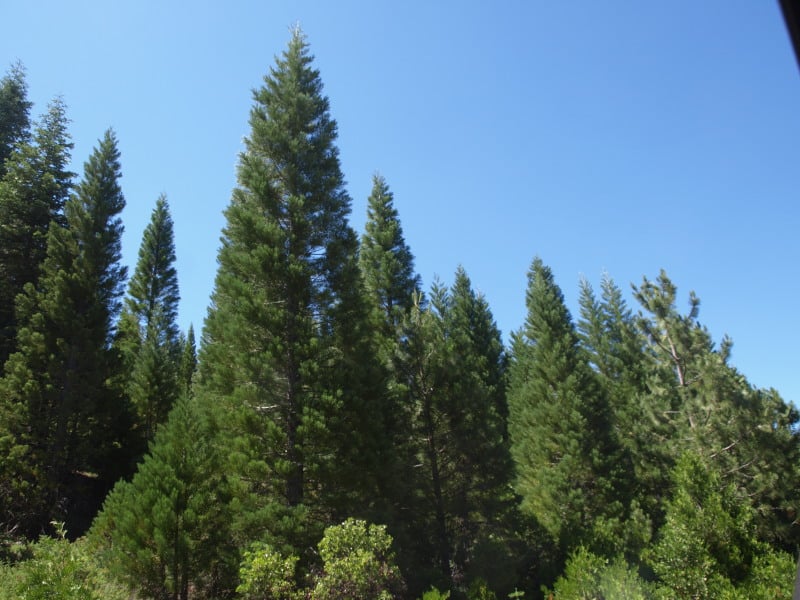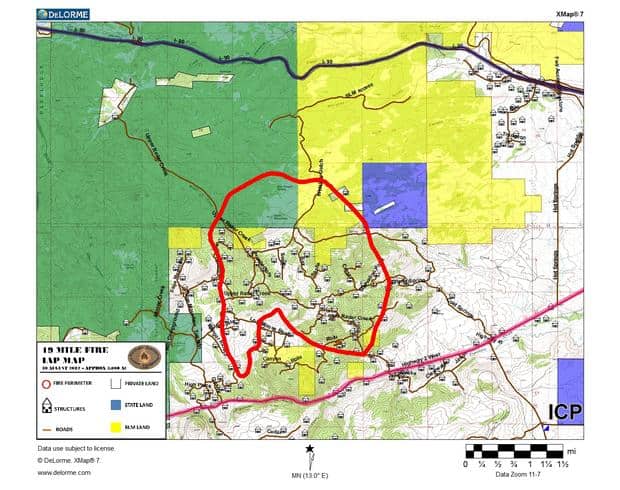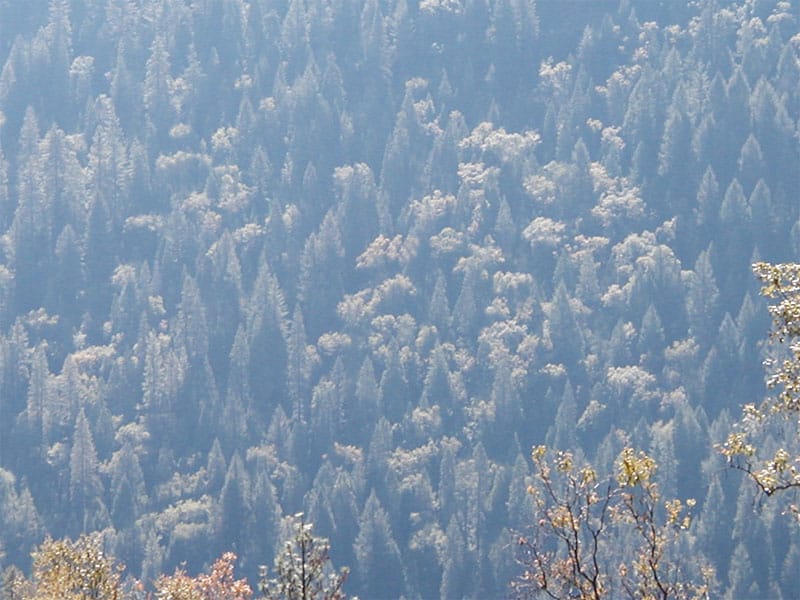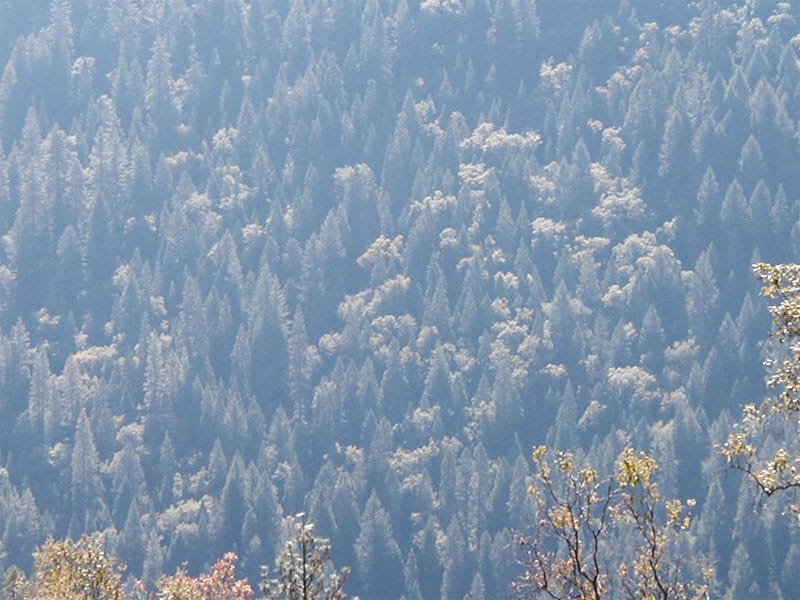Yesterday, Jim Robbins (a Montana-based science writer for the New York Times) had a very interesting article in the paper, which featured a few of the scientists/researchers we’ve highlighted before on this blog.
Robbins was lucky enough to spend a day in the woods with Dr. Richard Hutto, professor of biology and the director of the University of Montana’s Avian Science Center. Dr. Hutto’s research has been brought up on this blog a few times in the past. A few years ago, Dr. Hutto put together a short video titled, “Portraits in Black,” which is a series of images from severely burned forests to help illustrate the value of such forests to those who might not believe such value exists (such as some of the readers and commenters of this blog?).
MISSOULA, Mont. — On a forested mountainside that was charred in a wildfire in 2003, Richard Hutto, a University of Montana ornithologist, plays a recording of a black-backed woodpecker drumming on a tree.
The distinctive tattoo goes unanswered until Dr. Hutto is ready to leave. Then, at the top of a tree burned to charcoal, a woodpecker with black feathers, a white breast and a yellow slash on its crown hammers a rhythmic response.
“This forest may have burned,” says Dr. Hutto, smiling, “but that doesn’t mean it’s dead. There’s a lot going on.”
The black-backed woodpecker’s drum signals more than the return of life to the forest. It also may be an important clue toward resolving a debate about how much, and even whether, to try to prevent large forest fires.
Scientists are at loggerheads over whether there is an ecological advantage to thinning forests and using prescribed fire to reduce fuel for subsequent fires — or whether those methods actually diminish ecological processes and biodiversity….
Recent research [some ecologists and environmentalists] say shows that nature often caused far more severe fires than tree ring records show. That means the ecology of Western forests depends on fires of varying degrees of severity, including what we think of as catastrophic fires, not just the kinds of low-intensity blazes that current Forest Service policy favors.
They say that large fires, far from destroying forests, can be a shot of adrenaline that stimulates biodiversity.
Robbins also speaks with Dr. William Baker, a fire ecologist at the University of Wyoming who’s recent research we’ve also discussed quite a bit on this blog.
William Baker, a fire and landscape ecologist at the University of Wyoming, contends that the kind of limited fires that are being employed to control bigger fires were not as common in nature as has been thought.
For a recent paper in the journal Global Ecology and Biogeography, published with Mark Williams, Dr. Baker employed an unorthodox method to reconstruct fire history that challenges current analysis of tree rings. (The study was financed by the National Science Foundation and the United States Department of Agriculture.)
Dr. Baker and Dr. Williams examined thousands of handwritten records created by agents of the federal General Land Office who surveyed undeveloped land in the West in the mid-19th century. The surveyors used an ax to mark trees at precise intervals and took meticulous notes on what the vegetation between marked trees looked like — meadow, burned forest or mature trees.
Altogether, Dr. Baker’s students combed through 13,000 handwritten records on 28,000 marked trees, and hiked miles in Oregon, Colorado and Arizona to find some of the trees and compare today’s conditions with those from the 1800s.
They found that low-intensity fires that occurred naturally were not as widespread as other research holds, and that they did not prevent more severe fires. Dr. Baker concluded that big fires are inevitable, and argues that it is best for ecosystems — and less expensive — to put up with them.
“Our research shows that reducing fuels isn’t going to reduce severity much,” he said. “Even if you reduce fuels, you are still going to have severe fires” because of extreme weather.
The article wraps up with some pretty good thoughts about the concept of “disturbance ecology” and a nice money quote from Dr. Hutto:
Proponents of the free-fire theory say that while human lives and property should be protected, beyond that widespread wildfires should be viewed as necessary ecological events that reset the clock on a landscape to provide habitats for numerous species for years and even decades to come. This principle stems from research into “disturbance ecology.” For instance, when a hurricane blows down a large swath of forest or a volcano erupts, it strongly stimulates an ecosystem, scientists have found.
“Disturbances are very important; they are huge,” said Mark Swanson, a Washington State University ecologist who recently published a paper noting that recovered areas thrived after the eruption of Mount St. Helens in 1980. “You actually have an increase in species richness, sometimes to regionally high levels.”
Dr. Hutto, the University of Montana ornithologist, said he believes the Forest Service approach was misguided. He pointed out that morel mushrooms thrive on charred ground, and birds, including the mountain bluebird and black-backed woodpecker, then move in.
Similarly, a plant called snowbush can remain dormant in the soil for centuries until heat from a fire cracks its seed coat, and it blooms profusely.
“The first year after a fire is when the magic really happens,” Dr. Hutto said.
UPDATE (Sept 19): The most recent issue of High Country News contains a related feature article, Fire scientists fight over what Western forests should look like.
Another UPDATE (Sept 26): Here’s an interesting comment made by Dr. Hutto on the HCN website:
Richard HuttoSep 19, 2012 09:02 AMSwetnam and Brown “…questioned how ponderosa pines could regenerate if Baker and Williams are correct about severe fires having scarred Western landscapes for generations.” They regenerate the same way most wingless pine seeds do–by animal dispersal. I have numerous photos of Clark’s nutcrackers and Mexican jays extracting seeds from cones on severely burned ponderosa pines (see photo evidence on our facebook page here: http://www.facebook.com/AvianScienceCenter). The more you learn about severe-fire ecology, the more it all makes sense–plant, beetle, and bird adaptations that are apparent even in many of our dry mixed-conifer forest types!







